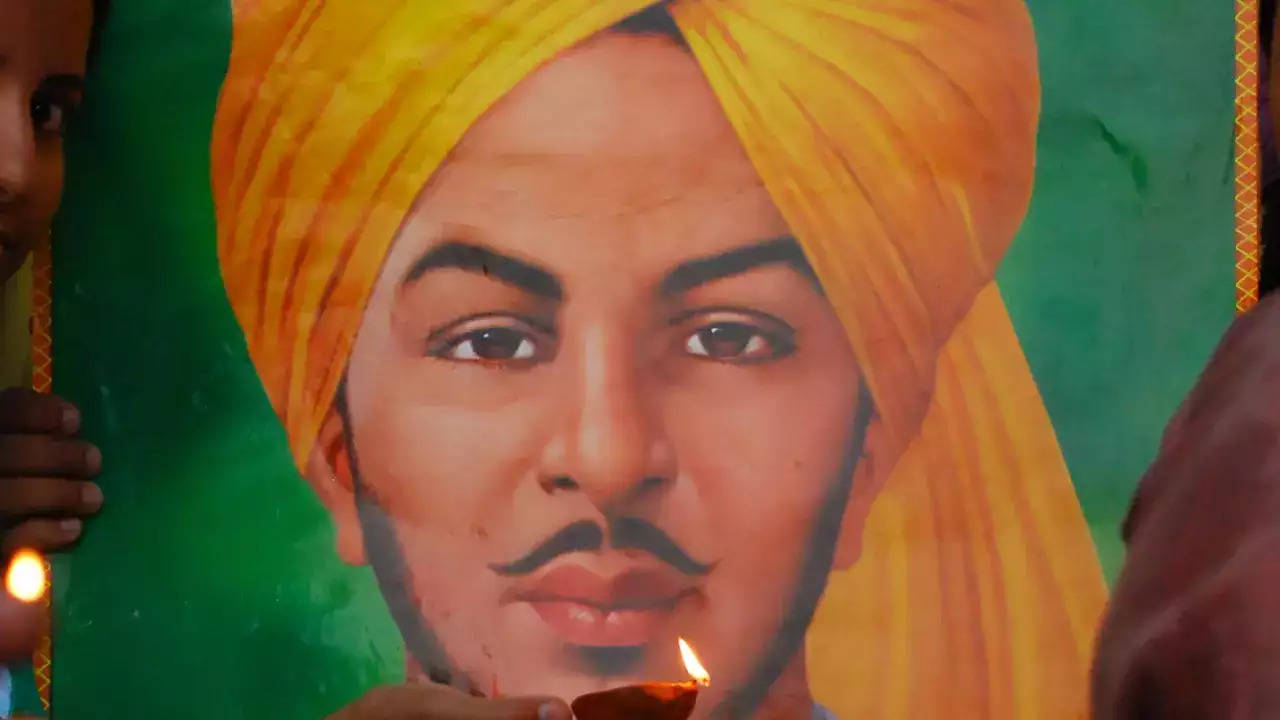[ad_1]
Bhagat Singh was a prominent Indian freedom fighter who played a crucial role in the struggle for India’s independence from British colonial rule in the early 20th century. Born on September 27, 1907, he became a symbol of youthful valor and patriotism. He was involved in several acts of protest and resistance against British oppression, including the famous Lahore Conspiracy Case. Bhagat Singh’s unwavering commitment to the cause of freedom and his sacrifice, as he was martyred at the age of 23 in 1931, continue to inspire generations of Indians in their pursuit of liberty and justice.
However, there are several lesser-known aspects of his life and activism. Here are 15 lesser-known things about Bhagat Singh:
However, there are several lesser-known aspects of his life and activism. Here are 15 lesser-known things about Bhagat Singh:
- Interest in Literature: Bhagat Singh was not only a freedom fighter but also had a keen interest in literature. He read extensively, including works by
Karl Marx andFriedrich Engels . He even wrote articles on the issues of capitalism and socialism. - Voracious Reader: He was an avid reader of books and newspapers, and he read extensively in English,
Urdu , and Punjabi. - Pen Name: Bhagat Singh used several pen names while writing for newspapers. Some of his pen names were “Shaheed-e-Azam,” “Balwant,” and “
Rajguru .” - No Formal Education: Bhagat Singh had to leave school at the age of 13 due to the Jallianwala Bagh massacre and other repressive measures by the British. He was mostly self-taught.
- Lover of Poetry: He had a deep love for poetry and was inspired by the works of poets like
Allama Iqbal andRam Prasad Bismil . - Lethal Attack on the Assembly: Bhagat Singh and
Batukeshwar Dutt threw non-lethal smoke bombs in the Central Legislative Assembly in Delhi on April 8, 1929, to protest against repressive laws. They did this to make their voices heard, not to harm anyone. - Use of Non-violent Methods: Before resorting to violent means, Bhagat Singh and his associates tried various non-violent methods of protest, such as signing petitions and organizing demonstrations.
- Hunger Strikes: Bhagat Singh and his fellow inmates conducted several hunger strikes while in prison to demand better conditions and rights for political prisoners.
- Influence of Anarchism: Bhagat Singh was influenced by the principles of anarchism, and he believed in the power of individual actions to bring about social change.
- Religious Harmony: Despite being a
Sikh by birth, Bhagat Singh was secular in his outlook and believed in religious harmony. He even kept a fast during the Hindu festival ofNavratri while in prison. - Symbol of Unity: Bhagat Singh’s life and sacrifice served as a unifying force among different political and religious groups in India during the struggle for independence.
- Belief in Socialist Ideals: He was not only fighting for India’s political freedom but also believed in the socialist ideals of equality and justice. He envisioned a classless society.
- Pioneering Use of Propaganda: Bhagat Singh was one of the pioneers of using propaganda as a tool for spreading the message of freedom. He used leaflets, pamphlets, and newspapers to reach the masses.
- Execution Date Mismatch: While the official date of Bhagat Singh’s execution is March 23, 1931, some historical accounts suggest that he was actually executed on March 24, 1931. This discrepancy has been a subject of debate.
- Posthumous Influence: Bhagat Singh’s legacy continues to inspire generations of Indians and freedom fighters worldwide. He is often referred to as “Shaheed-e-Azam” (Martyr of the Nation) and remains an enduring symbol of sacrifice and patriotism.
[ad_2]
Source link

